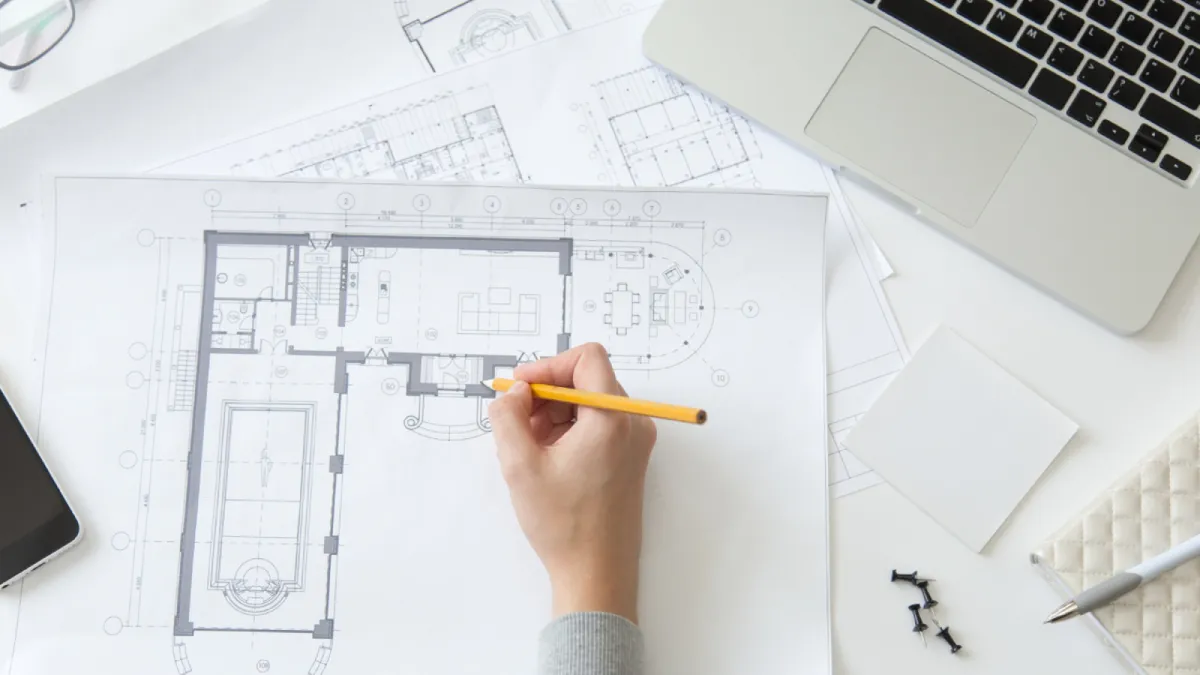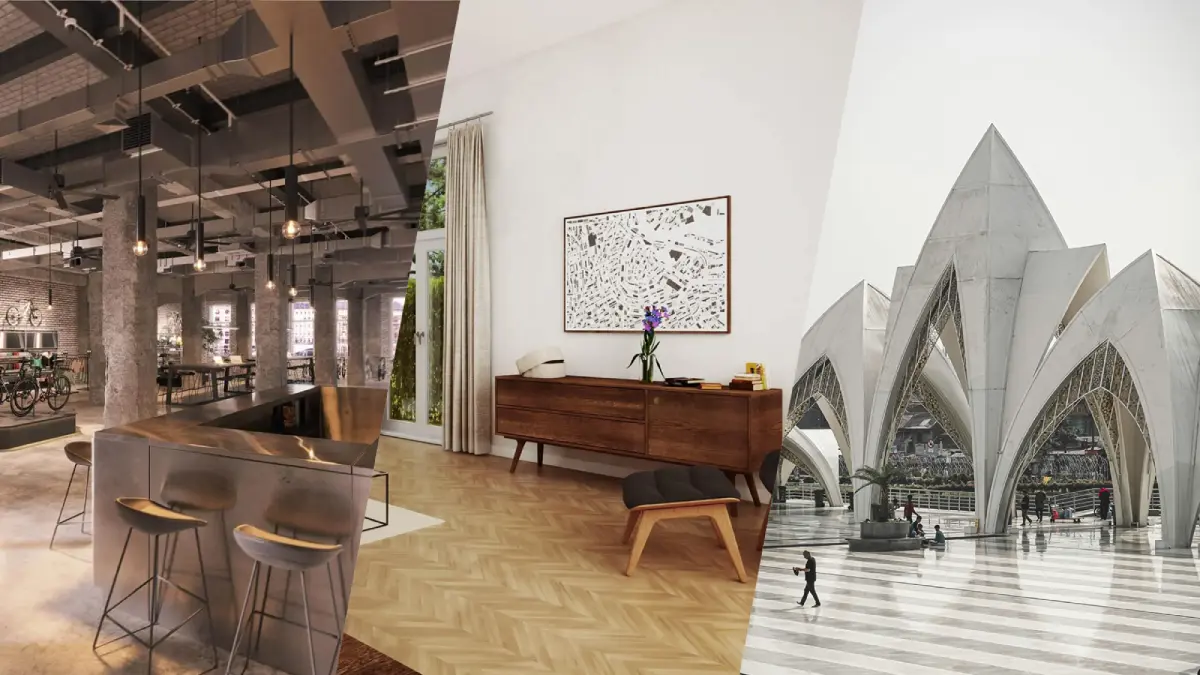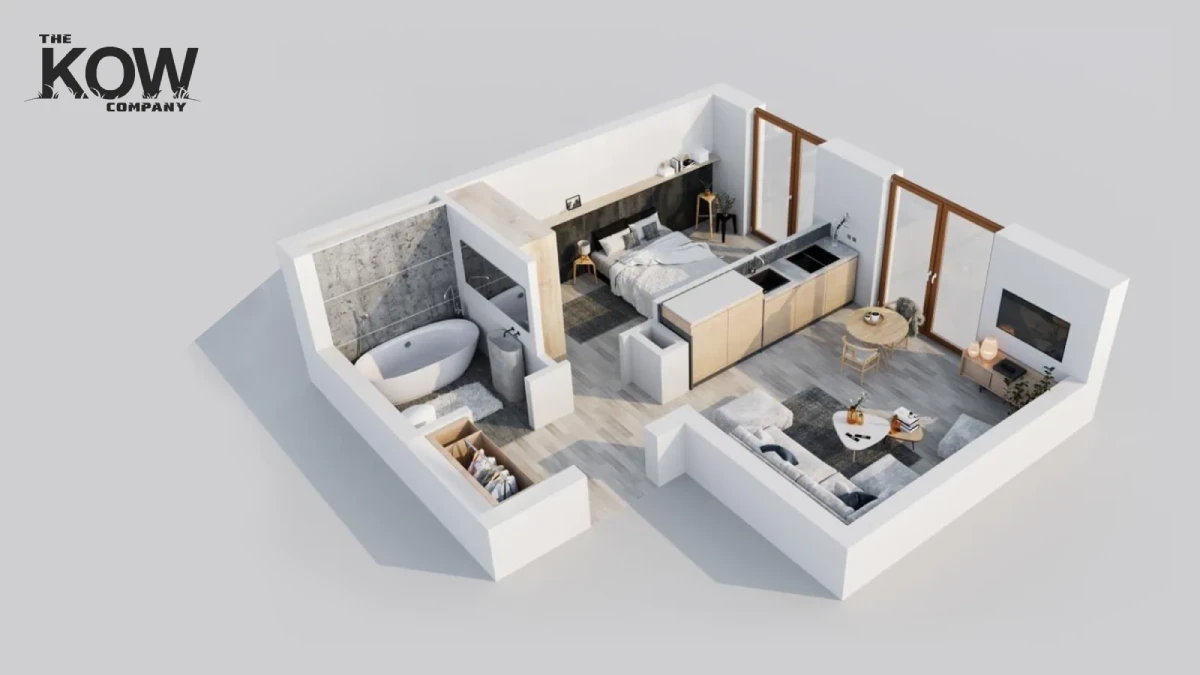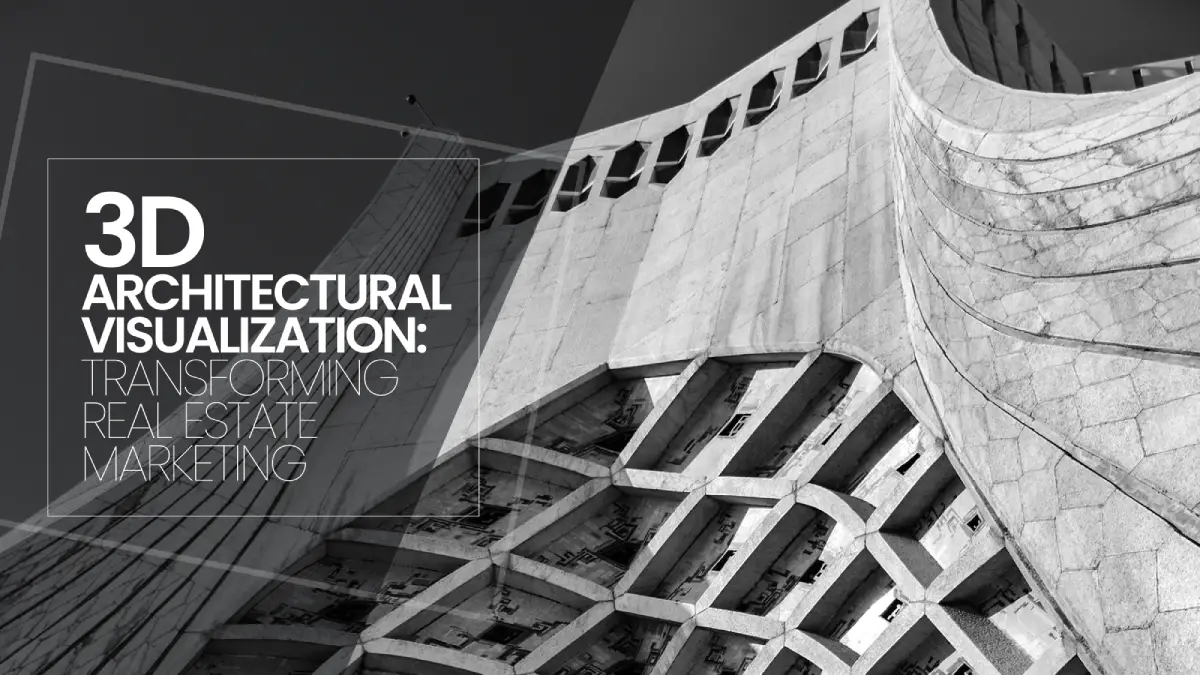The real estate business has always relied heavily on visuals. Before computer graphics or sleek brochures, it was pencil sketches and giant blueprints rolled out on a desk. Those drawings weren’t just technical; they started conversations. People could gather around, point to a corner, and imagine a balcony there; suddenly, the idea felt real.
Fast forward to now, and buyers are no longer satisfied with flat floor plans or a couple of staged photos. They want to feel the space. How does the light spill across the living room floor in late afternoon? Can they picture the kitchen with their own dining table in place? Some even expect to "walk through" the property virtually before any ground is broken. That's exactly where 3D architectural visualization comes in.
Instead of asking people to picture it in their heads, it gives them something that feels almost touchable. Not just pretty images, but an actual sense of space. Developers get to show off projects well before construction starts. Agents gain a tool that doesn't just sell but builds trust. And buyers? They finally see what's promised instead of trying to guess.
Here's the interesting part: by 2026, photorealistic renderings aren't "cutting edge" anymore. They're basic. What excites buyers now are interactive tours, AR/VR layers that can place you over a real room, and AI tools that let you swap flooring, wall colors, and even furniture on the fly. Imagine standing inside a digital apartment, clicking through options until it feels like your home. That's something old-school marketing could never deliver.
In this guide, we will look at how 3D visualization is not just changing real estate – it is completely transforming it. Whether you are an experienced real estate agent or just interested in how property marketing is evolving, get ready to learn why 3D architectural visualization is now essential for success in modern real estate.
What is 3D Architectural Visualization?
3D architectural visualization is the middle ground between imagination and reality. It takes flat drawings or blueprints and turns them into something you can actually see and almost step into. Simply to say it is the process of creating three-dimensional, realistic representations of architectural designs using computer software. Instead of staring at a floor plan, buyers get a three-dimensional, realistic view of what a property will look like once it's finished.

With today's rendering tools, developers can bring out every detail. You don't just see an exterior shot; you can zoom in on how the sun falls across a balcony or how a living room might feel once it's furnished. Some projects even go further, giving a sense of the entire community, including the roads, parks, and greenery. It's like getting a sneak peek at a place that hasn't been built yet.
The Technology Behind the 3D Magic
Modern architectural visualization services make the most of advanced software and rendering tech. Top visualization companies in this field use popular tools like 3ds Max, V-Ray, Corona, and Lumion to whip up amazing visuals that are so good, they almost look like real photos.
Here are some key technologies used in 3D visualization.
Ray tracing for realistic lighting and reflections
Global illumination for natural light behavior
High-dynamic-range imaging (HDRI) for environmental lighting
GPU acceleration for faster rendering times
Core Components of 3D Architectural Visualization
3D Modeling
Texturing & Materials
Lighting Setup
Camera Angles
Environmental Elements
Furniture & Props
Animation & Movement
Scale & Proportions
Color Grading
Rendering Process
Post-Processing
Types of 3D Architectural Visualization
Exterior Visualizations: Showcase building facades, landscaping, and contextual surroundings with stunning realism through rendering for architecture.
Interior Visualizations: Reveal how spaces feel from the inside, complete with furniture, lighting, and atmospheric details, using real-time 3D visualization.
Virtual Walkthroughs: Interactive real estate virtual tours allow viewers to navigate through spaces as if they were physically present.
Architectural Animations: Cinematic presentations showing buildings from multiple angles, time-lapse construction, or seasonal changes.
Virtual Reality (VR) Experiences: Immersive environments where clients can "walk through" spaces using VR headsets represent the future of 3D real estate photography.
How 3D Visualization Improves the Real Estate Buying Process?

Buying property is a big decision. Visuals play a more important role than most people think. Here's how 3D makes a difference:
Better Decisions
Investors especially want to avoid uncertainty. When they can clearly picture a completed project, see how natural light fills rooms, how materials will look, and how spaces connect, it becomes much easier to trust the process. This kind of visual clarity lowers perceived risk and helps make the decision to commit much smoother.
More Confidence
Investors really don't like uncertainty. When they can easily visualize a finished project, like imagining how natural light streams into rooms, how the materials will actually look, and how everything flows together, it's way easier for them to trust the process. This clear picture helps lower their worries and makes it simpler to commit to the project.
Saves Time
With a single digital model, there's no need for repeated site visits or costly mock-ups. You can quickly try out different wall colors, flooring, or furniture setups. Buyers can look at options whenever they want and arrive at meetings already knowing what they like.
Reaches Global Buyers
The awesome thing? Location is no longer a big deal. A buyer across the globe can check out a property with a detailed virtual tour, all from their laptop. This totally opens up international markets and helps sellers connect with real buyers, no matter where they are.
Emotional Connection Building
3D visuals create an impressive effect that static images cannot match. When buyers can see themselves in a space, like enjoying morning coffee on the balcony or hosting friends in the living room, they form a personal connection. This connection can lead to quicker buying decisions.
Overcoming Physical Limitations
3D visualization makes it super easy for buyers to check out properties that are still being built or even ones far away. No more wondering how a blueprint will turn out or losing out on great opportunities just because of the distance.
Key Trends in 3D Architectural Visualization for 2025
Architectural visualization is changing quickly. Buyers today don't just want to see a picture; they want to experience a property before it exists. That means the way we design, render, and present real estate is shifting fast. Here are a few of the big trends shaping 2025:
Real-Time 3D Visualization
Flat images? They just don't cut it anymore. Buyers want interaction, control, and movement. Picture sliding a button to shift the light from morning to evening and watching the glow stretch across the living room floor. Or clicking once to swap out a dining table. Simple. Instant. And suddenly, it feels less like a rendering and more like your home.
AI in Design
AI isn't hype, it's hands-on. Renderings that used to take hours now pop up in minutes. Floor plan options? Generated instantly. And here's the twist: it learns what people want. One buyer sees an open kitchen, another sees a cozy closed one, all from the same base model. It's like the software is quietly co-designing with you.
Virtual & Augmented Reality
VR and AR aren't gimmicks anymore. A headset can put someone in a condo that hasn't been built yet, letting them walk from room to room as if it's already finished. AR takes it outdoors, hold up your phone at a construction site, and the whole building rises in front of you. Honestly, after seeing that, flipping through brochures feels almost silly.
Cloud-Based Rendering Solutions
The days of waiting overnight for renders are ending. Cloud platforms now crunch complex 3D scenes in minutes, not hours. Teams can collaborate from anywhere, and for example, an architect in New York tweaks lighting while a client in Dubai reviews materials simultaneously. Plus, no more expensive hardware upgrades. Just upload, render, and share.
Photorealistic Materials & Textures
The important details matter, and in 2025, it's all about getting them right. Modern rendering engines now show how marble reflects light, how fabric absorbs it, and how wood grain creates shadows. Buyers can see the difference between brushed steel and polished chrome, or feel confident about that expensive Italian tile choice. It's not just pretty pictures anymore; it's material honesty that helps people make real decisions about finishes that cost real money.
Mobile-Optimized 3D Experiences
Desktop viewing is becoming secondary. Most buyers first encounter properties on their phones, so 3D experiences need to work flawlessly on smaller screens. Touch gestures replace mouse clicks, loading times shrink, and quality stays crisp. The property tour now fits in your pocket.
Benefits of 3D Visualization in Real Estate Marketing
When it comes to selling property, visuals have always been the backbone. Floor plans, glossy brochures, model units, they all had their moment. But 3D visualization changes the game. It doesn't just make things look good; it helps build trust, speeds up sales, and gives developers an advantage when the market is crowded.

Pre-Selling Properties
One of the biggest shifts is being able to sell units before construction even begins. Buyers don't have to imagine what "could be," they can see it. The balcony view, the kitchen setup, and even the way late-afternoon light stretches across the living room floor. Once buyers can picture themselves there, they're quicker to commit. And investors feel more confident backing something they can actually visualize.
Faster Decision-Making & Reduced Sales Cycles
Here's what happens when buyers can truly see what they're getting: they stop hesitating. Instead of scheduling multiple visits, asking for more photos, or requesting "just one more walkthrough," they move forward. The back-and-forth that usually drags sales out for weeks gets compressed into days. Mortgage lenders love it too; clear, detailed visuals help speed up approvals because everyone's on the same page about what's being financed.
Global Reach & Remote Selling
Geography used to limit who could buy property, but that's changed. A buyer in Singapore can now tour a Miami penthouse during their lunch break, and an investor in London can assess a New York development without needing to fly there. The pandemic showed us that people can make big property decisions remotely, but they need to see and experience the space properly. 3D visualization makes this possible, turning every listing into a global opportunity.
Stronger Marketing Materials
Let's be honest: real estate lives and dies on visuals. A brochure with lifelike 3D renderings feels far more convincing than one full of technical sketches. A website loaded with photo-quality images looks less like a draft and more like a finished product. Even social ads hit differently; people stop scrolling when they see something that looks real.
Cost Savings
Physical mock-ups, staged apartments, and endless revisions? They add up fast. With 3D, a single digital model can be reused across ads, presentations, and even interactive tours. Need to swap flooring or paint colors? No problem, it's a quick tweak. That flexibility saves serious time and money.
Standing Out in a Crowded Market
Competition in real estate is fierce. The listings that stand out are the ones that look complete, modern, and polished. High-quality 3D visuals give buyers that confidence instantly, and that first impression often tips the scales in favor of a developer.
Role of 2D Visuals and Supporting Graphics
3D visuals may steal the show in real estate today, but 2D hasn't disappeared. In fact, it's often the first thing people reach for. Simple sketches and flat visuals are easier to pass around, and they deliver quick answers that 3D models sometimes overcomplicate.
Floor Plans
Ask any buyer, and most of them want to see a floor plan before anything else. It's a direct way to picture room sizes, how the spaces connect, and whether the layout works for daily life. A rough plan can answer questions in seconds: Where's the kitchen? How far is the dining room? Does the bedroom placement make sense? That kind of clarity is tough to beat.
Infographics
Numbers tell their own story. People want to glance at square footage, parking options, or price ranges without reading long descriptions. Infographics step in here. They package the data neatly, whether for a brochure, a website, or a quick presentation.
Combining 2D and 3D
The strongest marketing mixes both 2D and 3D. A polished 3D render brings out the mood and atmosphere of a property, while 2D pieces nail down the facts. When you put them together, buyers get the big picture and the small details in one go, clearer for families comparing homes, and sharper for professionals checking the technical side.
Future Outlook: What's Next for Real Estate Visualization
Real estate marketing is changing, and visualization is key. In the coming years, expect tools that do more than just display properties; they will change the entire buying experience.
AI is already changing how homes are designed. Rather than offering buyers a set floor plan, these systems can quickly adjust layouts, open up kitchens, move walls, or rethink storage to fit each person’s needs.
Holograms are also starting to appear in real estate. Imagine visiting a sales center and walking around a full-size digital model of a home that hasn’t been built yet. Buyers can explore it instead of just picturing it in their minds.
Blockchain is also becoming part of the picture. While it doesn’t change a property’s appearance, it can make the process more reliable by keeping ownership records and transaction details clear and accessible within visualization platforms.
Renderings are also becoming more realistic. The gap between computer-generated images and real photos is closing, so most buyers can’t tell them apart. This level of realism helps buyers feel confident that they will receive what they see. These changes show that visualization is more than just a way to sell homes. It is now a tool for building trust, making buyers feel secure, and helping developers close deals quickly.
How The KOW Company Supports Real Estate Marketing with 3D Visualization
Selling real estate has never been easy, and today the competition is tougher than ever. A building on its own isn't enough; it needs a story that people can see, trust, and believe in. That's the gap The KOW Company helps to close.

Our team produces 3D visuals that make empty lots and unfinished spaces feel real. Instead of waiting until construction wraps up, developers can share projects early, pitch to investors with confidence, and even secure sales before the first brick is laid. In a fast-moving market, those early wins matter.
But visualization isn't just about walls, windows, or furniture placement. Every project has its own identity. A quiet residential street, a corporate office tower, or a resort by the sea all demand a different touch. We focus on what makes each one stand out: how the layout flows, how light plays across a room, and how a space reflects a lifestyle. Precision is important, but so is emotion. After all, a buyer isn't only looking at square footage, they're imagining a future.
For brokers and marketing teams, our work takes the pressure off. Instead of relying on flat floor plans or generic stock photos, they get content ready to plug into websites, ads, and presentations. Buyers see more than "a property"; they get an experience that builds trust and speeds up decisions.
As a specialized 3D visualization company, we work closely with architects, interior designers, and marketing teams from the beginning. Our team ensures that every decision, including materials, angles, and lighting, supports the project vision and attracts the target market.
We are not just delivering 3D visuals. We're helping professionals earn confidence, inspire buyers, and compete with an edge in a crowded market.
Conclusion
3D visualization has shifted from being a luxury to something buyers now expect. People want to picture a home, an office, or even a holiday villa before it exists. That early preview often makes them commit faster. Instead of waiting for construction, developers can show what's coming and keep investors engaged from the start.
The tools for real estate are improving. We now have virtual tours, real-time rendering, and easy-to-use walkthroughs that feel natural. At The KOW Company, our focus is not on showing perfect images but on helping real estate teams explain their projects clearly. When buyers understand the vision, they feel less hesitant and make decisions faster. In today's competitive market, clear communication is not just helpful; it is essential for success.
Frequently Asked Questions
What is 3D architectural visualization and why is it important for real estate marketing?
3D architectural visualization is a photorealistic digital representation of buildings and spaces before they're built. It's essential for attracting buyers, pre-selling units, and standing out in a competitive market.
How does 3D visualization improve the real estate buying process?
3D visualization helps buyers to make faster decisions by showing realistic property views. Buyers can explore spaces virtually, understand layouts better, and feel more confident about purchases.
What are the latest trends in 3D architectural visualization for 2025?
Current trends in 3D visualization include virtual reality tours, real-time rendering, augmented reality viewing, AI-powered visualization, interactive 3D models, and cloud-based presentations.
Can 2D architectural drawings still be useful alongside 3D visualization?
Yes, 2D drawings are still needed for construction plans and permits. However, 3D visualization is much better for marketing and sales.
What's the difference between 3D rendering and 3D visualization?
3D rendering creates static images from 3D models. And 3D visualization includes interactive features like virtual tours, animations, and real-time walkthroughs.
Can 3D visualizations be used for marketing before construction begins?
Yes, 3D visualization works best for pre-construction marketing. Developers can show projects to investors, secure early sales, and generate interest before building starts. This improves cash flow and project success rates.
How can The KOW Company help real estate businesses with 3D visualization?
The KOW Company creates realistic 3D images, virtual tours, and marketing materials for real estate projects. We help developers, architects, and marketers showcase properties effectively, leading to faster sales and better investor presentations with our professional 3D visualization services.

